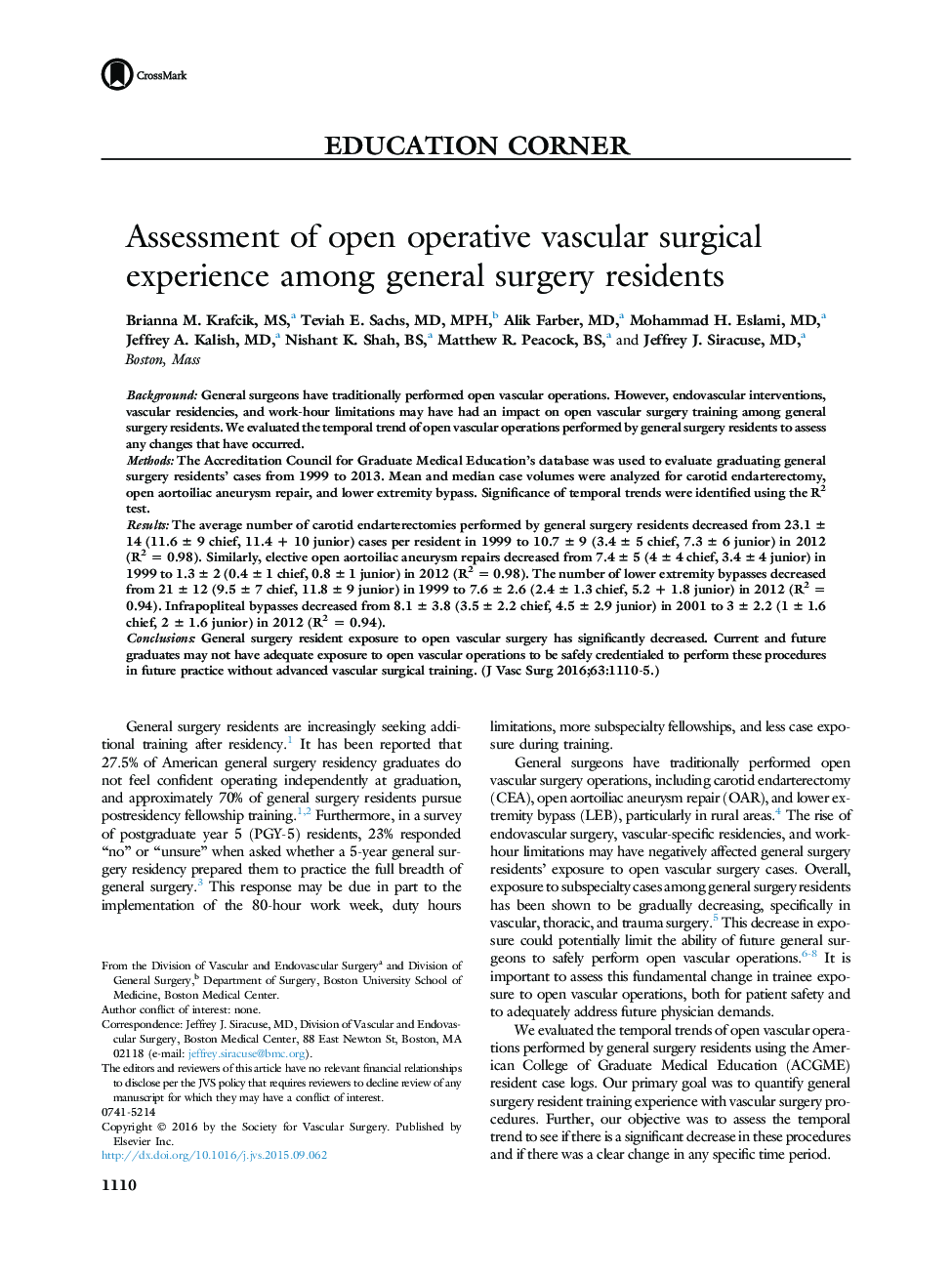| Article ID | Journal | Published Year | Pages | File Type |
|---|---|---|---|---|
| 2988045 | Journal of Vascular Surgery | 2016 | 6 Pages |
BackgroundGeneral surgeons have traditionally performed open vascular operations. However, endovascular interventions, vascular residencies, and work-hour limitations may have had an impact on open vascular surgery training among general surgery residents. We evaluated the temporal trend of open vascular operations performed by general surgery residents to assess any changes that have occurred.MethodsThe Accreditation Council for Graduate Medical Education's database was used to evaluate graduating general surgery residents' cases from 1999 to 2013. Mean and median case volumes were analyzed for carotid endarterectomy, open aortoiliac aneurysm repair, and lower extremity bypass. Significance of temporal trends were identified using the R2 test.ResultsThe average number of carotid endarterectomies performed by general surgery residents decreased from 23.1 ± 14 (11.6 ± 9 chief, 11.4 + 10 junior) cases per resident in 1999 to 10.7 ± 9 (3.4 ± 5 chief, 7.3 ± 6 junior) in 2012 (R2 = 0.98). Similarly, elective open aortoiliac aneurysm repairs decreased from 7.4 ± 5 (4 ± 4 chief, 3.4 ± 4 junior) in 1999 to 1.3 ± 2 (0.4 ± 1 chief, 0.8 ± 1 junior) in 2012 (R2 = 0.98). The number of lower extremity bypasses decreased from 21 ± 12 (9.5 ± 7 chief, 11.8 ± 9 junior) in 1999 to 7.6 ± 2.6 (2.4 ± 1.3 chief, 5.2 + 1.8 junior) in 2012 (R2 = 0.94). Infrapopliteal bypasses decreased from 8.1 ± 3.8 (3.5 ± 2.2 chief, 4.5 ± 2.9 junior) in 2001 to 3 ± 2.2 (1 ± 1.6 chief, 2 ± 1.6 junior) in 2012 (R2 = 0.94).ConclusionsGeneral surgery resident exposure to open vascular surgery has significantly decreased. Current and future graduates may not have adequate exposure to open vascular operations to be safely credentialed to perform these procedures in future practice without advanced vascular surgical training.
